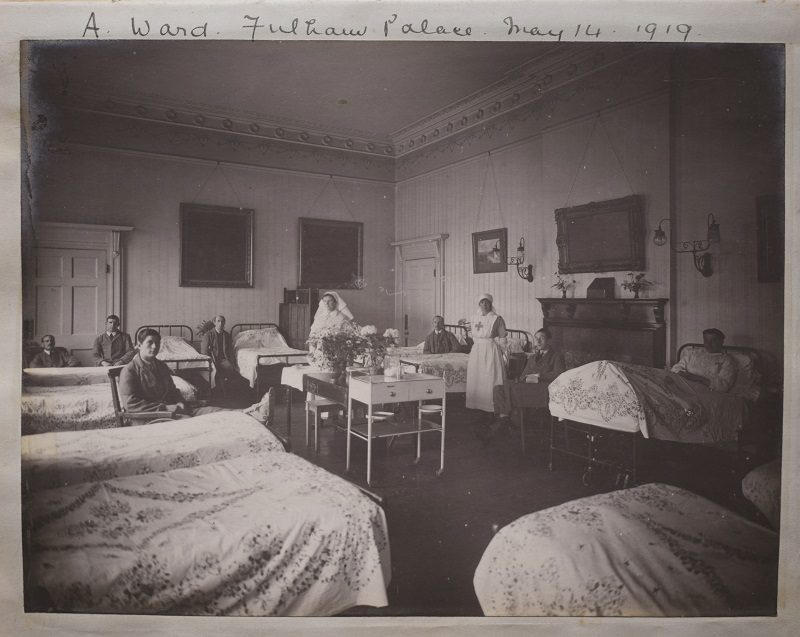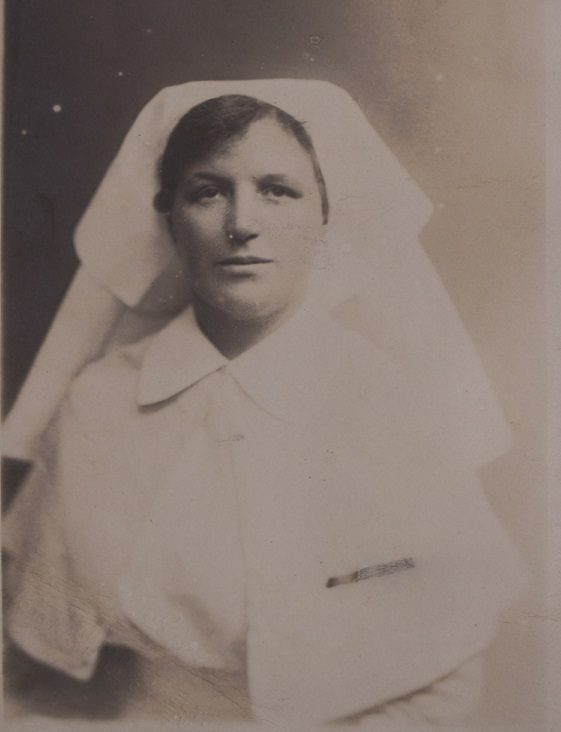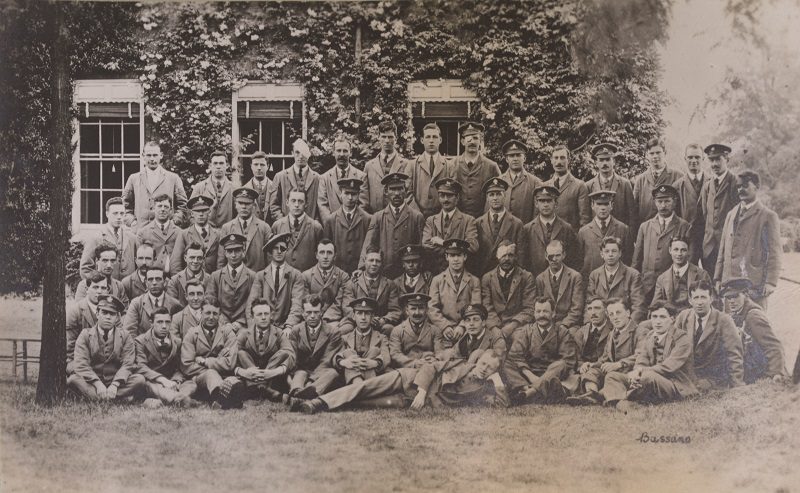A palace fit for heroic soldiers back from war
Like some of the other great historical masterpieces in the capital, such as Hampton Court and Eltham Palace, Fulham Palace looks like it has not changed since Doomsday.
Tucked into Bishop’s Park just north of Putney Bridge and flanked by the Thames, it has always enjoyed its status as a magnificent country pile in an
urban setting.
Its mediaeval origins add to the mystique and the Grade I listed building is now a museum full of historic rooms and artefacts.

But just over a century ago, the famous home for bishops had very different occupants and visitors from the usual mix of VIPS, clergymen and citizens who had paid a visit or lived there down the centuries.
In 1918, it was handed over by the Bishop for use as a hospital – for just one year until 1919 – for recuperating soldiers injured in the First World War, and this brief interlude could easily have passed unforgotten into the annals of the Palace’s history.
But as it happens, the Palace’s conversion into a wartime hospital was recorded in a scrapbook made by one of the nurses – Sister Mary Latchmore. Most of these photos come from that scrapbook.
A dedicated and conscientious nurse, Sister Mary was resident at the hospital and her personal record has left a fine memento of this important slice of local history.
The guardians of Fulham Palace have been able to use her document to piece together the histories of some of those soldiers – to find out more about their backgrounds, the units they served in, the injuries they sustained and the lives they led afterwards.

The role of the nurses is a particularly important aspect, and a recent archive project undertaken by the Royal College of Nursing reveals that the practice of nurses keeping scrapbooks was not uncommon.
As an auxiliary hospital, the patients were often less seriously wounded than those in the military hospitals, although it is clear from the photographs that many of them had lost limbs.
Numerous patients were also suffering from ‘shell shock’, and the tranquil grounds of the Palace were viewed as an appropriate location for recovery.
Methods of assistance appear to have involved encouraging the patients to draw, to compose poetry and to help out in the gardens and on the farm.
The current café room has been identified as Ward A in pictures and other parts of the house and grounds look much as they do today.
These patients were the lucky ones, as they did grow old, although for many the physical and mental wounds they suffered would never truly have healed.

That was not the only time Fulham Palace doubled up as a wartime refuge. During the Blitz in 1940 200 people stayed for several nights after their homes were destroyed by bombs.
The captivating history of Fulham Palace spans over 1,300 years and 133 Bishops of London.
The site has been a residence of the Bishops of London since AD 704, when Bishop Waldhere acquired the Manor of Fulham – a vast estate covering most of Hammersmith, Fulham, Acton, Ealing and Finchley.
As bishops were called ‘Princes of the Church’ the estate became known as Fulham Palace.
During the mid-13th century, the original manor house was abandoned. The foundations of the current house start at this time.
Over the past 750 years the house has evolved as different bishops carried out building works, from remodelling the great hall to demolishing the Tudor state wing.
This has created an interesting mixture of architectural styles which reflect changing fashions and the differing needs of the bishops and their families.

Bishop Stopford was the final Bishop of London to live here, leaving in 1973.
Hammersmith and Fulham council ran the site until April 2011, when the independent charity Fulham Palace Trust was formed and took over the management of the estate.
Its homely garden tucked at the back of the building has been enjoyed by Victorian promenaders and relaxing 21st century families alike.
It will doubtless continue to add more chapters in its colourful history.
Pictures: Garden party for the First World War soldiers Pictures: Fulham Palace
